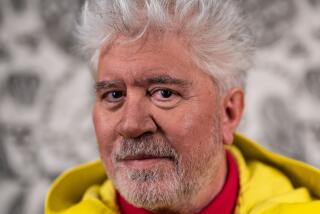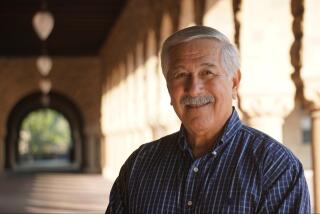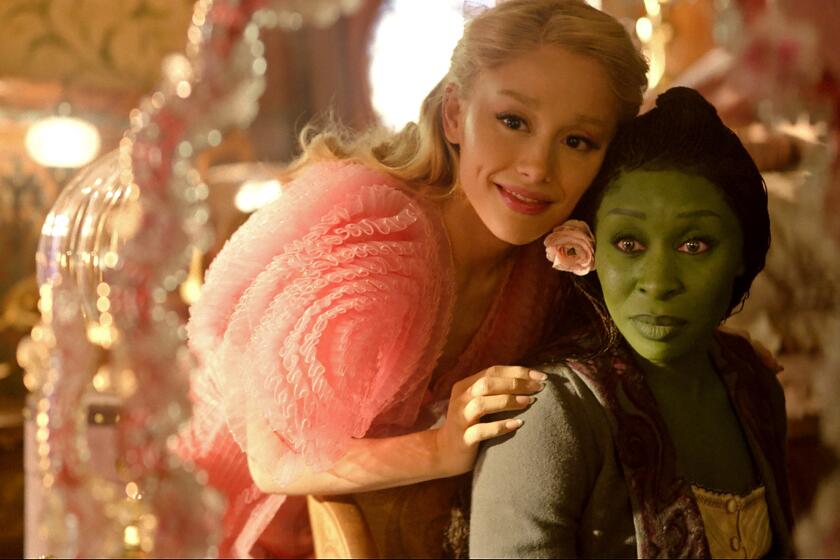With eyes all American
The images of Ricardo Ocreto Alvarado (1914-1976), a Filipino immigrant and prolific amateur photographer, tell a familiar story.
Most Americans claim some version of it, whether tracing back to the earliest British, Spanish and French settlers; to the 19th century waves of Irish, Italian, Chinese and Japanese immigrants; or to the more recent Latin American influx. Though far from universal -- the African version, of course, is tragically different, and the Native American another case altogether -- it remains so deeply rooted in the American imagination that it has become a sort of national mythology.
For the record:
12:00 a.m. July 29, 2004 For The Record
Los Angeles Times Thursday July 29, 2004 Home Edition Main News Part A Page 2 National Desk 1 inches; 41 words Type of Material: Correction
Ricardo Ocreto Alvarado exhibit -- A review in the July 8 Calendar Weekend section of “Through My Father’s Eyes: The Filipino American Photographs of Ricardo Ocreto Alvarado” described a car in one photo as a Chrysler. It is a 1941 Chevrolet.
Alvarado’s account of this immigrant story, showcased in a modest exhibition at the UCLA Fowler Museum of Cultural History, is unique in that it offers a glimpse into a relatively undocumented community: first- and second-generation Filipino Americans in Northern California in the 1940s and ‘50s. But the framework of the mythology remains, a testament to its enduring flexibility.
A returned soldier on the steps of a church with his bride; two grinning young women on the fender of a Chrysler; a couple behind the counter of their tidy corner market -- the same pictures might have been taken in any number of communities across the country at the time. The subjects are Filipino in this case, but they’re also, Alvarado emphasizes, beamingly American.
What ultimately distinguishes the work, bridging the specific and the mythological, is its deeply personal character. Alvarado clearly enjoyed people and seems to have sought the best in them. These aren’t detached works of weighty social commentary but simple pictures taken in proud, happy moments: at weddings, baptisms and dances, in pageants and at work. The subjects are family, friends and peers who open their homes and give themselves generously to his camera. The result is sociologically compelling but also sweetly intimate.
Alvarado’s particular version of the immigrant story begins at the turn of the last century, when the Spanish-American War made the Philippines a U.S. territory and precipitated a mass migration of Filipino men seeking work in Hawaii and California. Alvarado, who arrived in San Francisco at age 14, was among this first generation, known as the Manong or “older brother” generation. He lived with his uncle, Ciriaco Ocreto, a gaunt but majestic figure whom we only encounter in a hospital bed and a coffin.
Alvarado worked as a janitor and house boy before enlisting in the 1st Filipino Infantry Regiment during World War II. He was a medic in the war and, upon returning, became a cook in San Francisco’s Letterman Army Hospital.
It was at this time that he took up photography. Why he did is not clear. The wall texts, although moderately helpful with historical background, have little to say about Alvarado’s interests and intentions.
He did not, apparently, sell or exhibit his work during his lifetime and pursued it only until he married in 1959 (to a woman he’d met in his home country during the war).
His daughter, Janet Alvarado, who co-curated the show -- hence the title, “Through My Father’s Eyes: The Filipino American Photographs of Ricardo Ocreto Alvarado” -- came across the 3,000 negatives from which it was drawn only after his death.
For someone with little training and few professional pretensions, Alvarado had exceptional instincts, producing clear and handsome pictures marked by a sophisticated sense of visual economy.
One image of well-dressed children dancing in adult-like couples in the confines of a modest living room is a deliciously giddy whirl of movement, intoxicating in its exuberance. Another, depicting two farmworkers among piles of empty produce crates along the edge of a broad, flat field is an elegant tribute to labor, on par with the best work of fellow Californian Dorothea Lange.
Because Alvarado approached this community as an insider rather than a sociologist, he’s not especially particular about what we might consider its distinctive qualities.
For a contemporary viewer, then, background details become especially revealing: the bold tropical shirts worn by members of a particular band; the scuffed saddle shoes and somber schoolgirl dress of a young woman demonstrating hula moves; the bare but clean simplicity of a migrant farmer’s dining room.
One particularly intriguing detail is the casual racial mingling one finds in many of the images. Although fairly well segregated from whites (one wall text cites miscegenation laws that kept the Manong generation from entering into that sphere), Alvarado and his peers were living, working and playing in an otherwise multiethnic environment. There were problems, no doubt, but Alvarado omitted them. His was a gracious and celebratory view of life, evidenced nowhere more clearly than in “Children’s Party”: a lovely image portraying a racially diverse group of youngsters waiting patiently around a humble table for a slice of birthday cake.
The most powerful works in the show are invariably those that introduce us directly to some memorable individual, offering a gratifying sense of human contact.
In another image from the same birthday party, for example, we meet a particularly handsome man with a baby on his lap -- perhaps the father of the house -- who gazes at the camera with a wonderfully calm and contented expression of pride.
In another we find a very pretty little girl in a white First Communion dress, clasping a Bible and rosary in small, folded hands and beaming gloriously.
A slender, elegant bride surrounded by fawning bridesmaids offers us a cool, knowing glance, probably only minutes from her nuptials. Two smartly dressed African American men -- proprietors of Jackson’s Nook, a San Francisco establishment frequented by blacks and Filipinos -- grin jovially from the edge of their bar. In another photograph, two Latino cockfighters display their vicious animals with affection.
Perhaps the most irresistible is a posed portrait of what the wall text refers to as a “Country Family”: a mother and about half a dozen children, ranging in age from toddler to teenager. Their surroundings are decidedly meager -- a bare room with brown paper on the walls, simple curtains and a ratty old couch -- but they’re neatly dressed and absolutely glowing, each of them, with smiles that seem likely to tumble into laughter.
One can only guess what Alvarado must have said to put them in such a state, but it suggests, as do most of the works in this show, that he was a man one would have been lucky to know.
*
‘Through My Father’s Eyes: The Filipino American Photographs of Ricardo Ocreto Alvarado’
Where: UCLA Fowler Museum of Cultural History, Sunset and Westwood boulevards
When: Noon to 5 p.m. Wednesdays through Sundays, noon to 8 p.m. Thursdays
Ends: Aug. 1
Price: Free
Contact: (310) 825-4361
More to Read
The biggest entertainment stories
Get our big stories about Hollywood, film, television, music, arts, culture and more right in your inbox as soon as they publish.
You may occasionally receive promotional content from the Los Angeles Times.










